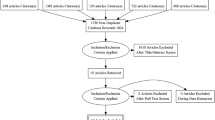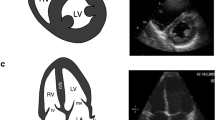Abstract
The purpose of this study was to access the accuracy of multi-detector-row computed tomography (MDCT) in diagnosing injuries in hemodynamically stable abdominal gunshot wound victims (AGWV). Triple-contrast MDCT was performed in hemodynamically stable AGWV during a 20-month prospective diagnostic accuracy study. Thirty-one patients (30 males, 1 female; mean age, 24.3 years) were evaluated by two radiologists for evidence of injury to solid and hollow organs, vascular structures, urinary bladder, diaphragm, fractures, and general findings (free fluid, pneumoperitoneum, and mesentery lesions). All of the patients underwent laparotomy, and prevalence, sensitivity, specificity, accuracy, and positive and negative predictive values were calculated. No statistically significant differences between radiologists were found. All of the solid and hollow organ lesions, vascular lesions, and general findings were detected. One of the four urinary bladder lesions was missed by MDCT, leading in this case to a sensitivity of 75%, specificity of 100%, positive predictive value of 100%, negative predictive value of 96.4%, and accuracy of 96.8% (p = 0.001). One of the eight diaphragm lesions was missed by MDCT, and its sensitivity was 87.5%, specificity was 100%, positive predictive value was 100%, negative predictive value was 95.8%, and accuracy was 96.8% (p < 0.001). Fractures were diagnosed in 74.4% of the patients (24 of 31). Fourteen (43.2%) patients demonstrated non-therapeutic laparotomy, in which minor lesions could have been managed conservatively. We concluded that MDCT is an accurate imaging method in evaluating selected AGWV, providing trusted information for emergency room physicians.








Similar content being viewed by others
References
Pryor JP, Reilly PM, Dabrowski GP, Grossman MD, Schwab CW (2004) Nonoperative management of abdominal gunshot wounds. Ann Emerg Med 43(3):344–353
Moore EE, Moore JB, Van Duzer-Moore S, Thompson JS (1980) Mandatory laparotomy for gunshot wounds penetrating the abdomen. Am J Surg 140(6):847–851
Maynard Ade L, Oropeza G (1968) Mandatory operation for penetrating wounds of the abdomen. Am J Surg 115(3):307–312
Shaftan GW (1960) Indications for operation in abdominal trauma. Am J Surg 99:657–664
Bull JC Jr, Mathewson C Jr (1968) Exploratory laparotomy in patients with penetrating wounds of the abdomen. Am J Surg 116(2):223–228
Nance FC, Wennar MH, Johnson LW, Ingram JC Jr, Cohn I Jr (1974) Surgical judgment in the management of penetrating wounds of the abdomen: experience with 2212 patients. Ann Surg 179(5):639–646
Lowe RJ, Saletta JD, Read DR, Radhakrishnan J, Moss GS (1977) Should laparotomy be mandatory or selective in gunshot wounds of the abdomen? J Trauma 17(12):903–907
Renz BM, Feliciano DV (1995) Unnecessary laparotomies for trauma: a prospective study of morbidity. J Trauma 38(3):350–356
Henderson VJ, Organ CH Jr, Smith RS (1993) Negative trauma celiotomy. Am Surg 59(6):365–370
Renz BM, Feliciano DV (1996) The length of hospital stay after an unnecessary laparotomy for trauma: a prospective study. J Trauma 40(2):187–190
Easter DW, Shackford SR, Mattrey RF (1991) A prospective randomized comparison of computed tomography with conventional diagnostic methods in the evaluation of penetrating injuries to the back and flank. Arch Surg 126(9):1115–1119
Velmahos GC, Demetriades D, Toutouzas KG et al (2001) Selective nonoperative management in 1,865 patients with abdominal gunshot wounds: should routine laparotomy still be the standard of care? Ann Surg 234(3):395–402
Conrad MF, Patton JH Jr, Parikshak M, Kralovich KA (2003) Selective management of penetrating truncal injuries: is emergency department discharge a reasonable goal? Am Surg 69(3):266–272
Demetriades D, Charalambides D, Lakhoo M et al (1991) Gunshot wounds of the abdomen: role of selective conservative management. Br J Surg 78(2):220–222
Demetriades D, Velmahos G, Cornwell E et al (1997) Selective nonoperative management of gunshot wounds of the anterior abdomen. Arch Surg 132(2):178–183
Nagy KK, Krosner SM, Joseph KT et al (1997) A method of determining peritoneal penetration in gunshot wounds to the abdomen. J Trauma 43(2):242–245
Kelemen JJ 3rd, Martin RR, Obney JA et al (1997) Evaluation of diagnostic peritoneal lavage in stable patients with gunshot wounds to the abdomen. Arch Surg 132(8):909–913
Udobi KF, Rodriguez A, Chiu WC, Scalea TM (2001) Role of ultrasonography in penetrating abdominal trauma: a prospective clinical study. J Trauma 50(3):475–479
Ditmars ML, Bongard F (1996) Laparoscopy for triage of penetrating trauma: the decision to explore. J Laparoendosc Surg 6(5):285–291
Prokop M (2003) General principles of MDCT. Eur J Radiol 45(Suppl 1):S4–S10
Rubin GD (2000) Data explosion: the challenge of multidetector-row CT. Eur J Radiol 36(2):74–80
Shanmuganathan K (2004) Multi-detector row CT imaging of blunt abdominal trauma. Semin Ultrasound CT MR 25(2):180–204
Renz BM, Feliciano DV (1994) Gunshot wounds to the right thoracoabdomen: a prospective study of nonoperative management. J Trauma 37(5):737–744
Grossman MD, May AK, Schwab CW et al (1998) Determining anatomic injury with computed tomography in selected torso gunshot wounds. J Trauma 45(3):446–456
Shanmuganathan K, Mirvis SE, Chiu WC, Killeen KL, Hogan GJ, Scalea TM (2004) Penetrating torso trauma: triple-contrast helical CT in peritoneal violation and organ injury-a prospective study in 200 patients. Radiology 231(3):775–784
Múnera F, Morales C, Soto JA et al (2004) Gunshot wounds of abdomen: evaluation of stable patients with triple-contrast helical CT. Radiology 231(2):399–405
Inaba K, Demetriades D (2007) The nonoperative management of penetrating abdominal trauma. Adv Surg 41:51–62
Author information
Authors and Affiliations
Corresponding author
Rights and permissions
About this article
Cite this article
Melo, E.L.A., de Menezes, M.R. & Cerri, G.G. Abdominal gunshot wounds: multi-detector-row CT findings compared with laparotomy—a prospective study. Emerg Radiol 19, 35–41 (2012). https://doi.org/10.1007/s10140-011-1004-1
Received:
Accepted:
Published:
Issue Date:
DOI: https://doi.org/10.1007/s10140-011-1004-1




